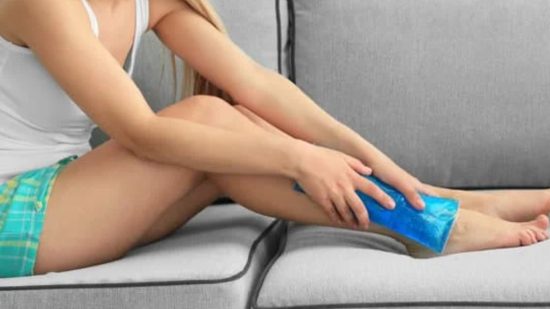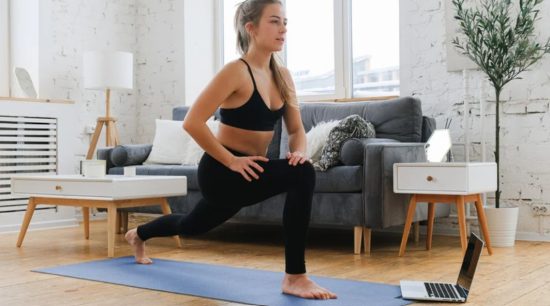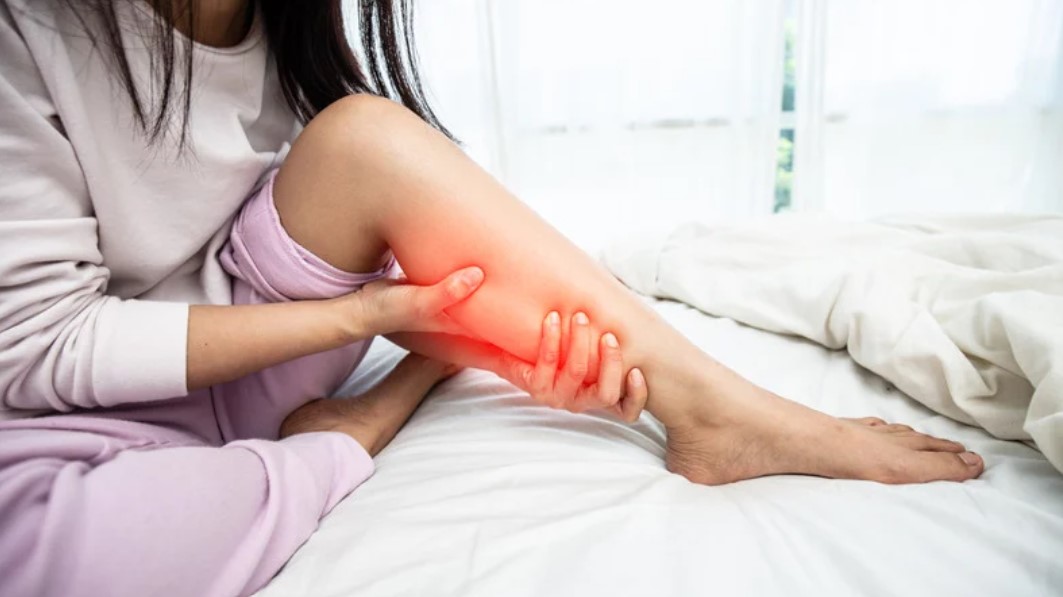Are you tired of tossing and turning at night, unable to find relief for your restless legs? Restless Leg Syndrome (RLS) can be a frustrating and disruptive condition that affects millions of people worldwide. The constant urge to move your legs due to uncomfortable sensations can make it difficult to relax and get the restful sleep you need.
But fear not! In this blog post, we will explore some effective techniques on how to stop restless legs immediately so you can finally experience the tranquillity and peace you deserve. Say goodbye to those restless nights – let’s dive in!
What is Restless Leg Syndrome?

Restless Legs Syndrome (RLS), also known as Willis-Ekbom Disease, is a neurological disorder characterized by an irresistible urge to move the legs. People with RLS often experience uncomfortable sensations in their legs, such as crawling, itching, tingling, or aching, which are temporarily relieved by movement.
These symptoms typically worsen during periods of rest or inactivity, particularly at night, leading to sleep disturbances and daytime fatigue. RLS can affect individuals of all ages, although it is more common in middle-aged and older adults. While the exact cause of RLS is unknown, it has been linked to genetic factors and imbalances in certain brain chemicals.
Managing RLS usually involves lifestyle modifications, such as exercise and relaxation techniques, alongside Medication prescribed by a healthcare professional.
Causes of Restless Leg Syndrome
Restless legs syndrome (RLS) can have various causes, and understanding these underlying factors is crucial for finding relief. While the exact cause of RLS remains unknown in many cases, certain triggers and conditions have been associated with its development.
- Genetics: Family history can increase risk.
- Iron Deficiency: Low iron levels in the brain may trigger symptoms.
- Health Conditions: Kidney disease, diabetes, and neuropathy can contribute.
- Medications: Certain drugs can worsen symptoms.
Identifying these potential causes can assist individuals in managing their restless leg syndrome effectively by addressing any underlying issues contributing to their discomfort. By recognizing possible triggers and taking appropriate steps towards alleviating them, individuals experiencing RLS can find relief from their symptoms.
How Do I Know If I Have Restless Leg Syndrome?

Restless Leg Syndrome (RLS) can manifest in a variety of ways, causing discomfort and sleep disturbances. While the symptoms may vary from person to person, there are common signs to look out for.
- The irresistible urge to move legs: Often accompanied by uncomfortable sensations.
- Worsening at rest: Particularly during inactivity or bedtime.
- Difficulty sleeping: Due to discomfort, leading to restless nights.
- Relieved by movement: Symptoms lessen with activity.
- Possible impact on arms: In some cases, RLS may affect other body parts.
It’s important to note that these symptoms are typically relieved by movement or activity. So, if you find yourself constantly fidgeting or pacing around to alleviate the discomfort in your legs, it could be a sign that you’re dealing with restless leg syndrome.
How to Stop Restless Legs Immediately?
1. Apply Heat or Cold

The effective way to find relief from restless legs is by applying heat or cold to the affected area. This simple technique can help soothe uncomfortable sensations and provide temporary relief.
When it comes to using heat, a heating pad or warm compress can work wonders. The warmth helps to relax the muscles and increase blood flow, which can alleviate the restlessness in your legs. Place a heating pad on your legs for 15-20 minutes before bedtime or whenever you experience symptoms.
On the other hand, some people find that cold therapy offers more relief. Applying a cold pack or ice wrapped in a cloth directly on the affected area can numb any discomfort and reduce inflammation. Cold therapy also constricts blood vessels, which may help calm down restless legs.
Experiment with both heat and cold therapies to see what works best for you. Some individuals find alternating between hot and cold packs provides even greater relief. Remember always to use caution when applying extreme temperatures directly on your skin, as burns or frostbite could occur if not used properly.
2. Take a Bath or Shower

Taking a bath or shower before bedtime is a simple yet effective way to relax your muscles and find relief from restless legs. The warm water helps to soothe the sensations and promote relaxation throughout your body.
When you immerse yourself in a warm bath, the heat dilates your blood vessels, improving circulation and reducing discomfort in your legs. It also helps to ease any tension or tightness that may be contributing to restless legs syndrome.
Not only does a bath or shower provide physical benefits, but it can also have psychological effects. The calming nature of warm water can help alleviate stress and anxiety, allowing you to unwind before sleep.
To maximize the benefits of taking a bath or shower for restless legs, consider adding Epsom salts or essential oils known for their relaxing properties. Lavender oil, in particular, has been shown to promote deep relaxation and improve sleep quality.
3. Engage in Relaxation Techniques

Engaging in relaxation techniques is an effective way to calm both your body and mind, providing relief from restless legs syndrome. One technique you can try is deep breathing exercises. By focusing on your breath and taking slow, deep breaths, you can promote relaxation throughout your entire body.
Another relaxation technique that may help alleviate restless legs symptoms is progressive muscle relaxation. This involves tensing and then releasing each muscle group in your body, starting from your toes all the way up to your head. Progressive muscle relaxation helps reduce tension and promotes a sense of overall calmness.
Yoga can also be beneficial for managing restless legs syndrome. The combination of gentle stretching, controlled breathing, and mindfulness can help relax both the body and mind. Certain yoga poses specifically target leg muscles, helping to relieve discomfort associated with RLS.
4. Stretch and Massage

Stretching and massaging the muscles in your legs can be a simple yet effective way to alleviate the discomfort of restless legs syndrome. By gently stretching the affected muscles, you can help reduce tension and promote relaxation. This can provide temporary relief from the sensations that make it difficult to sit still or fall asleep.
To start, find a comfortable position where you have enough space to stretch your legs properly. Begin by flexing your toes towards your body, feeling a gentle stretch in your calf muscles. Hold this position for a few seconds before releasing and repeating on the other side.
Next, try using massage techniques to relax your leg muscles further. Using firm but gentle pressure, use circular motions with your hands or fingers to massage the affected area. Focus on any areas that feel particularly tense or uncomfortable.
Remember to pay attention to how much pressure feels right for you – everyone’s tolerance is different. The goal is not pain but rather relieving tension and promoting relaxation through touch and movement.
5. Exercise Regularly

Regular physical activity has been shown to have numerous benefits for overall health and well-being, and it’s no different when it comes to managing restless legs syndrome (RLS). Engaging in moderate exercise on a regular basis can help alleviate the uncomfortable sensations that accompany RLS.
One effective form of exercise for reducing RLS symptoms is walking. It gets your blood flowing and helps improve circulation throughout your body, including your legs. Aim for at least 30 minutes of brisk walking each day to reap the benefits.
Swimming is another great low-impact exercise option that can provide relief from restlessness in the legs. The buoyancy of water reduces pressure on joints while still allowing you to engage multiple muscle groups.
Remember, consistency is key when it comes to incorporating regular exercise into your routine. Find activities that you enjoy and make them a priority in your daily life. By staying active, you may find significant relief from those pesky restless leg symptoms.
6. Maintain a Consistent Sleep Schedule

Establishing a consistent sleep schedule is crucial in managing restless legs syndrome effectively. By prioritizing quality sleep each night, you can minimize the chances of experiencing uncomfortable sensations in your legs.
Creating a regular sleep routine involves going to bed and waking up at the same time every day, including weekends. This helps regulate your body’s internal clock and promotes better overall sleep hygiene.
To ensure that you are getting enough restful sleep, it is essential to create an optimal sleeping environment. Keep your bedroom cool, dark, and quiet to promote relaxation. Invest in a comfortable mattress and pillows that support your body properly.
By establishing and sticking to a regular sleep routine, you provide your body with the necessary rest it needs while minimizing disturbances from restless legs syndrome symptoms during the night.
7. Avoid Stimulants

Certain stimulants like caffeine, nicotine, and alcohol can exacerbate restless legs syndrome (RLS) symptoms. These substances disrupt sleep patterns and increase muscle tension, intensifying restless leg sensations. To find relief, consider reducing or eliminating these stimulants from your routine.
Caffeine, found in coffee and tea, can intensify RLS symptoms. Switching to decaf options or herbal teas may help. Nicotine, present in tobacco products, is known to worsen RLS. Quitting smoking can benefit both your health and RLS symptoms. Similarly, alcohol disrupts sleep and promotes inflammation, making RLS worse.
By limiting or avoiding these stimulants, you can reduce the severity of restless legs and improve your overall comfort. Since everyone’s experience with RLS is unique, it may take some experimentation to find what works best for you.
8. Keep a Sleep Diary

Keeping a detailed sleep diary is a valuable tool for managing restless legs syndrome (RLS). Record the date, time, and severity of your symptoms, along with potential triggers like stress or activities before bed. Track your sleep duration and quality, as lack of sleep can worsen RLS. Include details about medications or remedies you try and their effects on your symptoms.
Over time, patterns may emerge that help you understand your RLS better. This information can guide lifestyle changes and treatment decisions to alleviate symptoms. Regularly review your diary with a healthcare professional to discuss insights and adjust your management plan as needed. With consistent monitoring and support, you can effectively manage RLS and improve your quality of life.
9. Consider Medication

If home remedies and lifestyle changes haven’t effectively relieved your restless legs syndrome (RLS), Medication may be an option. However, Medication should only be considered if symptoms persist or significantly affect your daily life. Consult with a healthcare professional to determine the best course of action.
Medications such as dopamine agonists (e.g., pramipexole, ropinirole) can increase dopamine levels in the brain, reducing RLS sensations. Gabapentin enacarbil, an anticonvulsant, is another option that has shown effectiveness in alleviating symptoms.
Consult a healthcare professional specializing in sleep disorders or neurology before starting any medication. They will evaluate your case and medical history to determine the most suitable Medication for you.
Finding the right Medication for RLS may involve some trial and error. Your doctor may need to adjust dosages or try different drugs to find what works best for you.
Never self-medicate or rely solely on over-the-counter remedies without medical guidance. Proper medical supervision ensures effective management of restless legs syndrome.
Coping Strategies and Support
Coping with restless legs syndrome can be challenging, but there are effective strategies and support systems available to help manage symptoms and improve quality of life. One essential coping strategy is communicating openly with loved ones, healthcare providers, and support groups about your experiences and needs.
By sharing your journey, you can gain understanding, empathy, and valuable insights into managing restless legs. Keeping a sleep diary can also be beneficial in tracking patterns, triggers, and symptom severity, helping you and your healthcare team develop personalized treatment plans. Additionally, joining support groups or online communities can provide a sense of belonging, shared experiences, and emotional support from others facing similar challenges.
These coping strategies and support resources play a vital role in navigating the complexities of restless legs syndrome and promoting overall well-being.
Conclusion
In conclusion, there are several effective methods for stopping restless legs immediately. From lifestyle changes such as exercise and reducing caffeine intake to relaxation techniques like stretching and massage, finding the right combination of strategies can provide relief from restlessness and improve overall sleep quality. It is important to consult with a healthcare professional if symptoms persist or significantly impact daily life. With patience and consistency, it is possible to find relief from restless legs and achieve a better night’s rest.
FAQs – How to Stop Restless Legs Immediately?
Does ibuprofen help restless legs?
Ibuprofen is a pain reliever and anti-inflammatory Medication. While it might help relieve any associated pain with RLS, it doesn’t directly address the underlying cause of the syndrome and won’t stop the leg sensations or movements.
How do you fall asleep with restless legs?
To improve sleep with restless legs, consider establishing a bedtime routine that includes relaxation techniques like gentle stretching, warm baths, or massage to soothe the legs. Creating a comfortable sleep environment with cool temperatures and minimal distractions can promote restful sleep. Additionally, practicing good sleep hygiene, such as maintaining a consistent sleep schedule and avoiding stimulants before bed, may help alleviate restless legs symptoms and enhance sleep quality.
What drink helps restless legs?
Herbal teas like chamomile, valerian root, or passionflower may have calming properties that can potentially help relax muscles and promote better sleep in individuals with restless legs syndrome. Warm milk or a small amount of tart cherry juice, known for its melatonin content, could also be soothing options to aid in managing restless legs symptoms before bedtime.
What is a quick fix for restless leg syndrome?
A quick fix for restless legs syndrome may include gentle leg stretches, applying heat or cold packs to the affected area, taking a warm bath, or massaging the legs. Some individuals find relief by walking around, doing light exercise, or using distraction techniques like reading or listening to relaxing music to alleviate discomfort and urge to move the legs.
Does paracetamol help restless legs?
While paracetamol (acetaminophen) may help alleviate mild pain associated with restless legs syndrome, it is not typically considered a primary treatment for the condition. Consult with a healthcare provider for proper diagnosis and suitable treatment options tailored to address the underlying causes of restless legs and manage its symptoms effectively.
What vitamin is lacking with restless leg syndrome?
Restless legs syndrome has been associated with deficiencies in certain vitamins and minerals, including iron, folate, magnesium, and vitamin B12. Low levels of these nutrients can contribute to restless legs symptoms, so ensuring adequate intake through diet, supplements, or medical advice can help address potential deficiencies and alleviate symptoms.
Do bananas help with restless leg syndrome?
Bananas are a good source of potassium and magnesium, both of which play essential roles in muscle function and relaxation. Including potassium-rich foods like bananas in your diet may help support muscle health and possibly reduce the severity of restless legs syndrome symptoms. However, individual responses may vary, so consulting with a healthcare provider for personalized recommendations is advisable.

